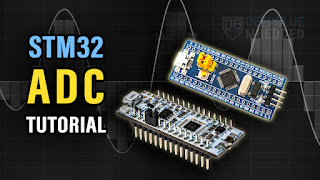What communication protocol servo used in Arduino?
Servos, particularly the standard hobbyist servos used with Arduino, do not use a common communication protocol like I2C, SPI, or UART. Instead, they use a much simpler, proprietary signal called Pulse Width Modulation (PWM).
It's crucial to understand that the servo motor itself is the receiver, and the Arduino sends a command signal to it.
The "Protocol": Pulse Width Modulation (PWM)
This isn't the same as the PWM used to dim an LED. For servos, the information is encoded in the duration of a pulse, not the average voltage.
Here’s how it works:
Signal Type: A single control wire carries a repeated pulse.
Voltage Level: 5V is the standard for most hobby servos (always check your servo's datasheet!). While the control signal is 5V, the power supply for the motor itself (
VCCandGND) can sometimes handle higher voltages (e.g., 6V or 7.4V), again, check the datasheet.Frequency (Refresh Rate): The pulse is repeated approximately every 20 milliseconds (ms). This equates to a frequency of 50 Hz.
Pulse Width (The Actual Command): The length of the high pulse within that 20ms period tells the servo what position to move to.
~1.5 ms Pulse: The servo moves to its neutral position (e.g., 90°).
~1.0 ms Pulse: The servo moves to its minimum position (e.g., 0°).
~2.0 ms Pulse: The servo moves to its maximum position (e.g., 180°).
Pulses between 1.0 ms and 2.0 ms will make the servo hold a position proportionally between its travel range.
Visual Representation of the Signal:
Time 0ms -> |----PULSE----|-----------------------------| -> Time 20ms
^ ^ ^
Start End Next
(Pulse Width) Cycle
* A 1.5ms pulse = Neutral (90°)
* A 1.0ms pulse = Full Left (0°)
* A 2.0ms pulse = Full Right (180°)How to Generate this Signal with Arduino
You have two main options:
1. The Servo.h Library (Easiest & Most Common)
This library handles all the timing complexity for you. It can control up to 12 servos on most Arduino boards and uses hardware timers to generate the precise pulses.
Example Code:
#include <Servo.h> Servo myServo; // Create a servo object void setup() { myServo.attach(9); // Attach the servo to digital pin 9 } void loop() { myServo.write(0); // Tell servo to go to 0 degrees (sends a ~1ms pulse) delay(1000); myServo.write(90); // Tell servo to go to 90 degrees (sends a ~1.5ms pulse) delay(1000); myServo.write(180); // Tell servo to go to 180 degrees (sends a ~2ms pulse) delay(1000); }
2. Manual Control with analogWrite() (Not Recommended)
You cannot reliably control a standard servo with analogWrite(). The analogWrite() function on Arduino is for dimming LEDs and controlling DC motor speed, which uses a different kind of PWM (different frequency and duty cycle). It will not work correctly for servos.
What About "Digital Servos" or "Smart Servos"?
This is where it gets more interesting and where actual communication protocols do come into play. Standard analog servos use the 50Hz PWM signal described above.
However, more advanced servos often use a true digital serial protocol for more features, precision, and daisy-chaining.
Common Digital Servo Protocols:
UART (Serial): Some servo manufacturers use a simple UART (TX/RX) protocol. You send a packet of data containing the servo ID, command, and parameters.
PWM (Backwards Compatible): Many "digital" servos still accept the standard 50Hz PWM signal for simplicity but have internal microprocessors for better performance.
Dedicated Protocols:
Dynamixel Protocol (Robotis): A very popular and robust UART-based protocol used in high-end robotics. It allows for daisy-chaining, reading back position, temperature, load, and more.
SBUS (Futaba): A serial protocol that can control many channels (servos) over a single wire.
PROTOCOL (DShot): A digital protocol popular in the drone world for ESCs (which are similar to servos), known for its high speed and reliability.
Summary Table
| Servo Type | Control Method | Arduino Interface | Key Characteristics |
|---|---|---|---|
| Standard Analog Servo | 50Hz PWM Pulse | Servo.h library & one digital pin. | Simple, cheap, 3 wires (PWR, GND, SIG). No feedback. |
| Digital Servo | Often 50Hz PWM (compatible) or proprietary serial. | Servo.h library or SoftwareSerial. | Faster, stronger, more precise. Still often uses PWM for control. |
| Smart/Bus Servo | Serial Protocol (e.g., UART). | Hardware/Software Serial (TX pin). | Daisy-chainable, feedback (position, temp), advanced control. |
Conclusion
For 99% of Arduino projects with standard hobby servos, the answer is: They use a custom 50Hz PWM signal, generated easily with the Servo.h library.
When you move into more advanced robotics, you will encounter servos that use genuine serial communication protocols like UART.




评论
发表评论